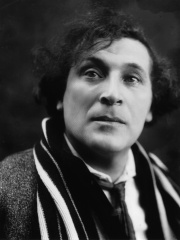
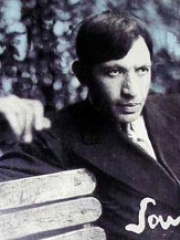
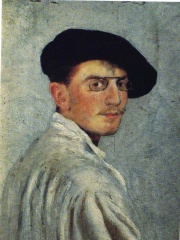
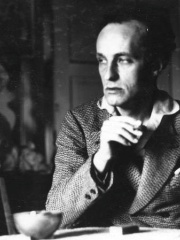
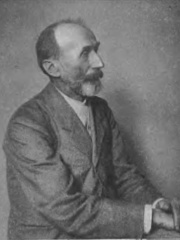
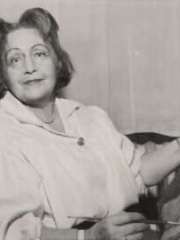
The Most Famous
PAINTERS from Belarus
Top 7
The following people are considered by Pantheon to be the most legendary Belarusian Painters of all time. This list of famous Belarusian Painters is sorted by HPI (Historical Popularity Index), a metric that aggregates information on a biography's online popularity.

1. Marc Chagall (1887 - 1985)
With an HPI of 82.65, Marc Chagall is the most famous Belarusian Painter. His biography has been translated into 84 different languages on wikipedia.
Marc Chagall (born Moishe Shagal; 6 July [O.S. 24 June] 1887 – 28 March 1985) was a Russian and French artist of Jewish origin. An early modernist, he was associated with the École de Paris, as well as several major artistic styles and created works in a wide range of artistic formats, including painting, drawings, book illustrations, stained glass, stage sets, ceramics, tapestries and fine art prints. Chagall was born in 1887, into a Jewish family near Vitebsk, today in Belarus, but at that time in the Pale of Settlement of the Russian Empire. Before World War I, he travelled between Saint Petersburg, Paris, and Berlin. During that period, he created his own mixture and style of modern art, based on his ideas of Eastern European and Jewish folklore. He spent the wartime years in Vitebsk and Petrograd, becoming one of the Russia's most distinguished artists and a member of the modernist avant-garde, founding the Vitebsk Museum of Modern Art and People's Art School. He later worked in and near Moscow in difficult conditions during hard times in Russia following the Bolshevik Revolution, before leaving again for Paris in 1923. During World War II, he escaped occupied France to the United States, where he lived in New York City for seven years before returning to France in 1948. Art critic Robert Hughes referred to Chagall as "the quintessential Jewish artist of the twentieth century". According to art historian Michael J. Lewis, Chagall was considered to be "the last survivor of the first generation of European modernists". For decades, he "had also been respected as the world's pre-eminent Jewish artist". Using the medium of stained glass, he produced windows for the cathedrals of Reims and Metz as well as the Fraumünster in Zürich, windows for the UN and the Art Institute of Chicago and the Jerusalem Windows in Israel. He also did large-scale paintings, including part of the ceiling of the Paris Opéra. He experienced modernism's "golden age" in Paris, where "he synthesized the art forms of Cubism, Symbolism, and Fauvism, and the influence of Fauvism gave rise to Surrealism". Yet throughout these phases of his style he remained "most emphatically a Jewish artist, whose work was one long dreamy reverie of life in his native Vitebsk." "When Matisse dies", Pablo Picasso remarked in the 1950s, "Chagall will be the only painter left who understands what colour really is".

2. Chaim Soutine (1893 - 1943)
With an HPI of 72.44, Chaim Soutine is the 2nd most famous Belarusian Painter. His biography has been translated into 43 different languages.
Chaïm Soutine (French: [ʃaim sutin]; Russian: Хаим Соломонович Сутин, romanized: Khaim Solomonovich Sutin; Yiddish: חײם סוטין, romanized: Chaim Sutin; 13 January 1893 – 9 August 1943) was a French painter of Belarusian-Jewish origin of the School of Paris, who made a major contribution to the Expressionist movement while living and working in Paris. Inspired by classic painting in the European tradition, exemplified by the works of Rembrandt, Chardin and Courbet, Soutine developed an individual style more concerned with shape, color, and texture than representation, which served as a bridge between more traditional approaches and the developing form of Abstract Expressionism.

3. Léon Bakst (1866 - 1924)
With an HPI of 68.95, Léon Bakst is the 3rd most famous Belarusian Painter. His biography has been translated into 44 different languages.
Léon (Lev) Samoylovich Bakst (Russian: Леон (Лев) Самойлович Бакст), born Leyb-Khaim Izrailevich Rosenberg (8 February [O.S. 27 January] 1866 – 27 December 1924), was a Russian painter and scene and costume designer of Jewish origin. He was a member of the Sergei Diaghilev circle and the Ballets Russes, for which he designed exotic, richly coloured sets and costumes. He designed the décor for such productions as Carnaval (1910), Spectre de la rose (1911), Daphnis and Chloe (1912), The Sleeping Princess (1921) and others.

4. Władysław Strzemiński (1893 - 1952)
With an HPI of 61.97, Władysław Strzemiński is the 4th most famous Belarusian Painter. His biography has been translated into 20 different languages.
Władysław Strzemiński (Polish pronunciation: [vwaˈdɨswaf ʂt͡ʂɛˈmiɲskʲi]; Russian: Владислав Максимилианович Стржеминский, romanized: Vladislav Maksimilianovich Strzheminsky; 21 November 1893 – 26 December 1952) was a Polish painter, art theoretician, pedagogue, and soldier. He is regarded as a pioneer of Constructivist avant-garde of the 1920s and 1930s and the developer of the theory of unism (Polish: unizm).
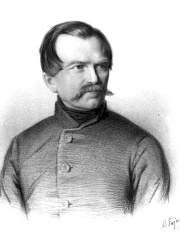
5. January Suchodolski (1797 - 1875)
With an HPI of 61.86, January Suchodolski is the 5th most famous Belarusian Painter. His biography has been translated into 24 different languages.
January Suchodolski (Polish: [januˈarɨ suxɔˈdɔlski]; 19 September 1797 – 20 March 1875) was a Polish painter and Army officer, and a member of the Imperial Academy of Arts.

6. Kazimierz Alchimowicz (1840 - 1916)
With an HPI of 58.56, Kazimierz Alchimowicz is the 6th most famous Belarusian Painter. His biography has been translated into 18 different languages.
Kazimierz Alchimowicz (December 20, 1840 – December 31, 1916) was a Polish romantic painter born in the Vilna Governorate of the Russian Empire (present-day Belarus).

7. Maja Berezowska (1893 - 1978)
With an HPI of 54.11, Maja Berezowska is the 7th most famous Belarusian Painter. Her biography has been translated into 17 different languages.
Maja Berezowska (13 April 1893 or 1898, in Baranowicze – 31 May 1978, in Warsaw) was a Polish painter. Berezowska was born in Baranowicze, in the Minsk Governorate of the Russian Empire (present-day Belarus), to Polish parents Edmund Berezowski, who was an engineer and general, and Janina Berezowska née Przecławska. She studied in Saint Petersburg, Kraków and Munich. From 1933 to 1936 she lived in Paris and worked with magazines such as "Le Figaro", "Le Rire" and "Ici Paris". She made a few caricature cartoons of Adolf Hitler which resulted in the official protest of the German Embassy in Paris, which sued Berezowska. She appeared in court but escaped having to pay any fine. However, Nazi Germans remembered her "outrage". After her return to Poland and the outbreak of World War II she was imprisoned at Pawiak, and later - with the death sentence - sent and imprisoned in the Ravensbrück concentration camp. After the liberation of the Ravensbrück camp by the Soviet forces she left, with a group of other Polish women, first for Stockholm and a year later, in 1946, returned to her native Poland and settled in Warsaw.
People
Pantheon has 7 people classified as Belarusian painters born between 1797 and 1893. Of these 7, none of them are still alive today. The most famous deceased Belarusian painters include Marc Chagall, Chaim Soutine, and Léon Bakst.
Deceased Belarusian Painters
Go to all RankingsMarc Chagall
1887 - 1985
HPI: 82.65
Chaim Soutine
1893 - 1943
HPI: 72.44
Léon Bakst
1866 - 1924
HPI: 68.95
Władysław Strzemiński
1893 - 1952
HPI: 61.97
January Suchodolski
1797 - 1875
HPI: 61.86
Kazimierz Alchimowicz
1840 - 1916
HPI: 58.56
Maja Berezowska
1893 - 1978
HPI: 54.11
Overlapping Lives
Which Painters were alive at the same time? This visualization shows the lifespans of the 7 most globally memorable Painters since 1700.

